Succulent Aloe Vera plants are common in many homes. Surely, you have encountered about its therapeutic benefits or how it relieves sunburns. However, you may not be aware that other kinds of plants resemble Aloe Vera. The leaves and flowers appear similar to those of many other plants. Keep reading to know about plants that look like aloe vera.
Although the leaves, textures, and overall look of these Aloe Vera look-alikes give the impression that they are quite similar, they are, in fact, very distinct. For your visual enjoyment, this article will present a few of these plants that resemble aloe vera.
Aloe Vera Overview
A species of succulent plant in the Aloe genus is the commonly known Aloe Vera. It comes from Arabian Peninsula and is a perennial evergreen. Around the globe, it grows naturally in dry, semi-tropical, as well as, tropical regions.
This succulent house plant has been grown for commercial purposes for a century and more, principally as a topical remedy. Aloe Vera has been cultivated inside as a potted house plant because it is beautiful for ornamental reasons.
It is utilized in several consumer goods, including ointments, skin lotion, cosmetics, drinks, and sunburn and mild burn gel. The efficacy and safety of the extract of aloe vera as a cosmetic medicine or topical are backed up by some clinical data.
Agave and Aloe Vera Plant Differences
While Agave and Aloe plants need comparable maintenance and growth conditions, these two easily misidentified plants vary significantly inside. It is important to be cautious of these variances in certain circumstances.
For instance, Aloe Veras have a therapeutic juice that may be utilized for mild burns and skin irritations. Despite having a similar look, agaves are mostly utilized to produce rope from their fibrous leaf. In the meanwhile, aloes have a substance within them that resembles gel.
There are several methods to ingest aloe juice, but you shouldn\’t ingest Agave. Otherwise, your stomach may need to be pumped, and your throat can get numb. You need to know the differences between the two for this crucial reason.
Their respective places of origin are another distinction between Agave and Aloe. Aloe originated in the Arabian Peninsula and Madagascar before spreading and thriving across the Mediterranean region. As the species evolved, some became summer growers, although others became winter growers.
Some Aloes, strangely enough, flourish in all seasons. Agave plants were initially grown in Mexico and American Southwest. Researchers estimate that these two plants first shared characteristics more than 90 million years ago.
How To Distinguish Aloe Vera and Agave Plants From One Another
While the similarities between Agave and Aloe plants may be perplexing and even dangerous, there are a few simple techniques to tell them apart.
Agaves often exceed aloes in size. Aloe Bainesii or tree aloe are two examples of expectations. The average aloe plant lives for twelve years. Agave plants, however, may survive for a century!
Moreover, Aloe leaves have a gel material inside of them, as was previously explained before. Agave is also fibrous. Furthermore, Aloe produces several blooms. The agave plant has only one and often dies after flowering.
Never ingest a plant if you aren\’t positive it is an aloe until you are certain it is. Once again, the simplest way to tell whether something is an aloe or another plant is to look at the aloe vera gel within.
Plants That Are Similarly Looking to Aloe Vera
Aloe Vera-like plants may be found in many different species. Others have the basic appearance of an aloe, some have thick leaves filled with gel like those of an aloe vera plant, and some have spines and spiky foliage.
Due to their appearance, certain plants are frequently mistaken for aloe vera. These consist of the following:
1. Agave Plant
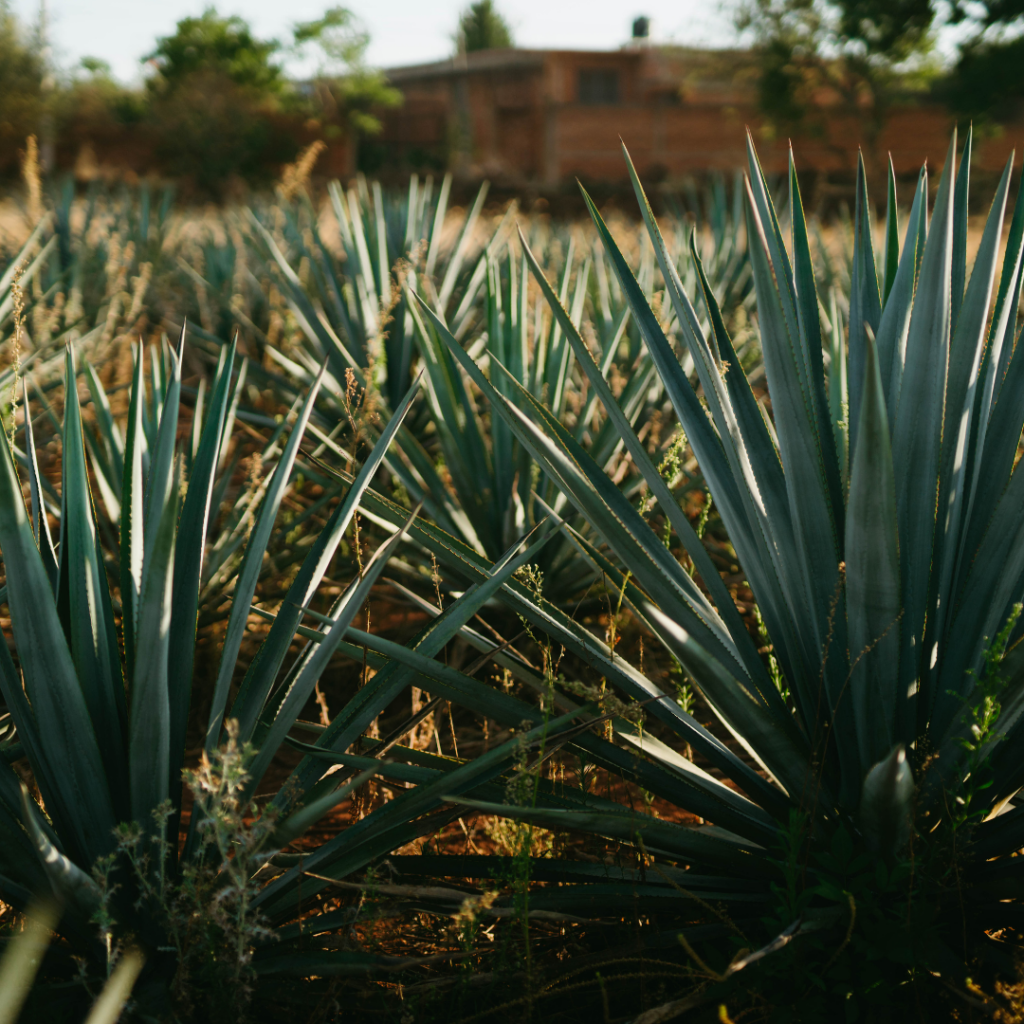
Agaves are succulents that come in a variety of hues. Typically, they grow to resemble aloe plants, and like aloe vera plants, their foliage has sharp edges.
The agave plant’s thick foliage, which is similar to the Aloe Vera leaf surface and serves as protection from cold and heat, is another attribute.
These are some characteristics of the Agave that set it apart:
- Every leaf has two tips that are opposite one another, giving the leaves a distinct saw-like appearance.
- A rosette\’s center is where the fleshy leaf emerges, and circular rows of the foliage surround it to form a dense root rosette.
- Agave plants, like aloe plants, have fibrous roots which allow them to attach to rocks or trees and create their own supportive structure for growing vertically far above the earth.
Generally speaking, agave plants are sturdy enough and need little care outside of continuous weekly watering during dry spells. If you want to grow an agave inside, the maintenance requirements are much the same as for aloe vera plants.
2. Gasteria Succulent

The leaves of this plant are succulent and grouped in a rosette. Depending on the species, the long, rough leaves may have colored or patterned patterns.
Gasteria succulents have green-gray leaves with a hint of orange color or brown or silver streaks, and may reach a height of twelve inches or more. The blossoms of Gasteria normally bloom in the autumn and vary in color from yellow to pinkish.
The blooms of Gasteria succulents resemble those of Haworthia and Aloe vera plants considerably more.
Succulents from the Gasteria genus are also less climate-sensitive. As a result, they are more tolerant of harsh temperatures and need less water than Aloe Veras.
3. Yucca Plant
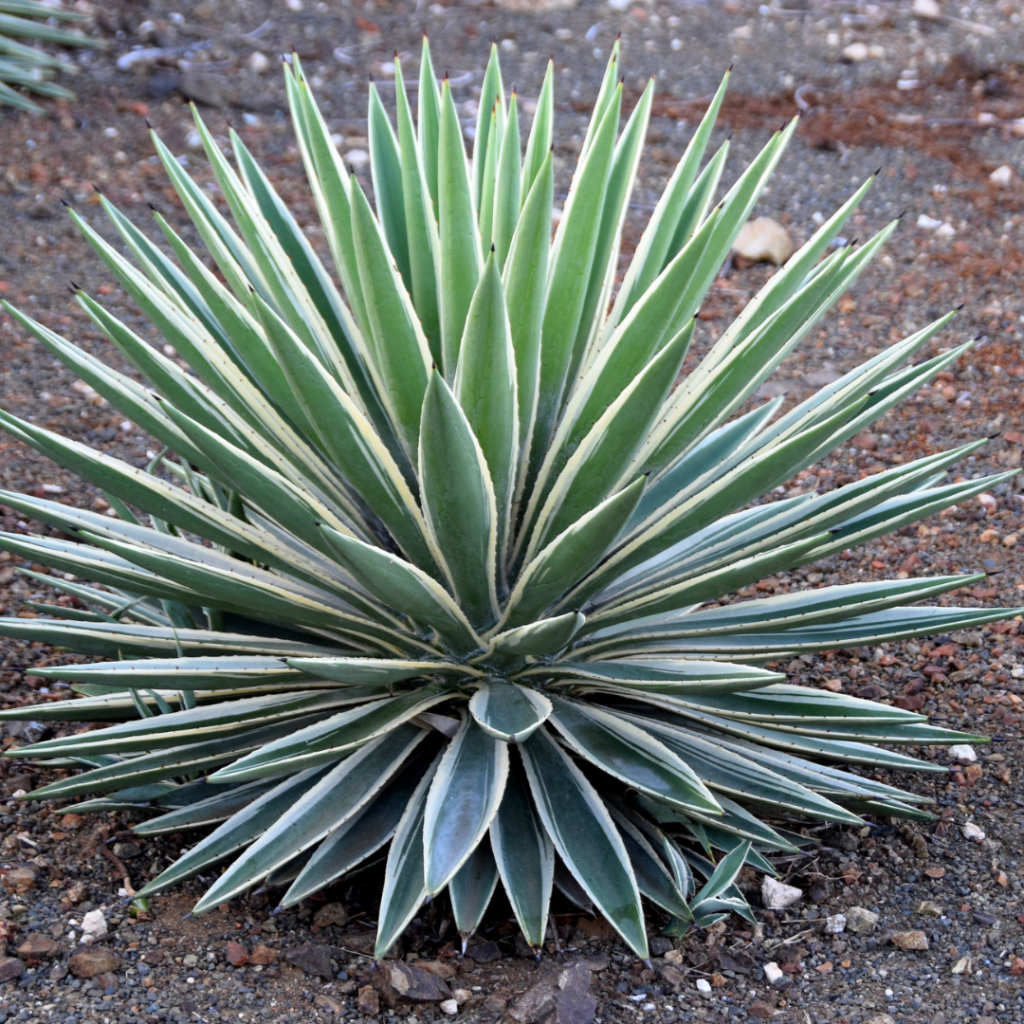
Another plant that is mistaken for aloe vera is the yucca. Agaves and yucca plants are linked. But their leaves and shapes are different. Yuccas feature a sword-shaped rosette of leaves that is said to be hardy. The large terminal panicles of whitish-colored flowers appear at the apex of the stalk.
As opposed to the majority of other succulents, whose trunks are either entirely covered in spines or have no bark at all, yucca plants have bark on their trunks.
But because of these two characteristics, yuccas resemble aloe veras in appearance as well. The plant has a rough appearance similar to those found on the bottom of the leaves of aloe vera plants because of the usual texture of the leaf surface and a smooth edge on either side.
Additionally, yuccas are well known for growing in desert environments, so if you are in a region with little water or a dry climate, yuccas can be an excellent selection.
Overall, even if some of the spiky succulents on the list resemble aloe vera, you should be sure there are valid reasons for keeping them as indoor plants. Be aware that Aloe is a medical plant; therefore, substituting other succulents or even cacti that resemble it may not provide the same advantages.
4. Maguey Plant

The prickly points on the leaf of this succulent house plant give it a cactus-like appearance, leading most gardeners to mistake it for a cactus plant that appears like Aloe Vera. Depending on the kind, maguey plants may reach a height of twenty feet, giving them a whole distinct appearance.
It has wide, long leaves that resemble the aloe vera plant in form. In the latter weeks of summer, its blossoms bloom. Additionally, it features white or pink petals, much like the majority of other succulent plants blooming during this time of year. Maguey plants, however, are monocarpic. They will only ever blossom once, according to this.
Similar to Aloe Vera plants, you may take care of one inside. However, you should take care to avoid overwatering it since this might cause root rot. A window that is west or south-facing will be better for Maguey since it will provide brilliant indirect light, as compared to a window that is east-facing which only provides mostly morning sunlight.
5. Dryland Bromeliads
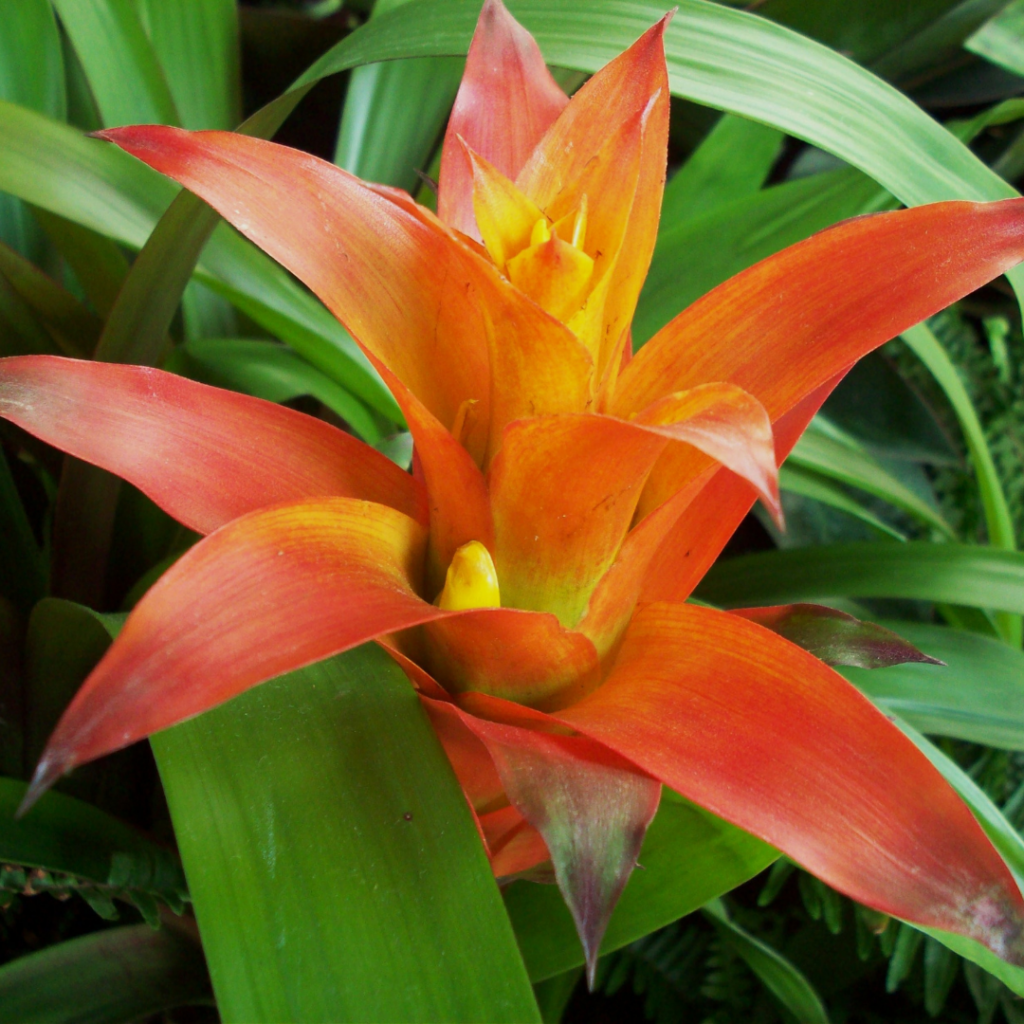
Their foliage resembles the yucca plant leaves that might be mistaken for Aloe vera leaves in that it grows in rosettes and has a rough feel. In contrast to most other succulent plants, which only have foliage at their tops, this plant has foliage that emerges from the ground, giving it the appearance of tall grass.
Spring is when Dryland Bromeliads bloom, although they are not very elaborate. It usually takes a few years before you see any blooms on your Dryland Bromeliads plant, and they often have pinkish or white petals.
Dyckia and Hechia are the two most common spiky bromeliads that closely resemble aloe vera plants.
RELATED: The Hosta With the Mosta: 9 Different Types Of Hostas
6. Haworthia
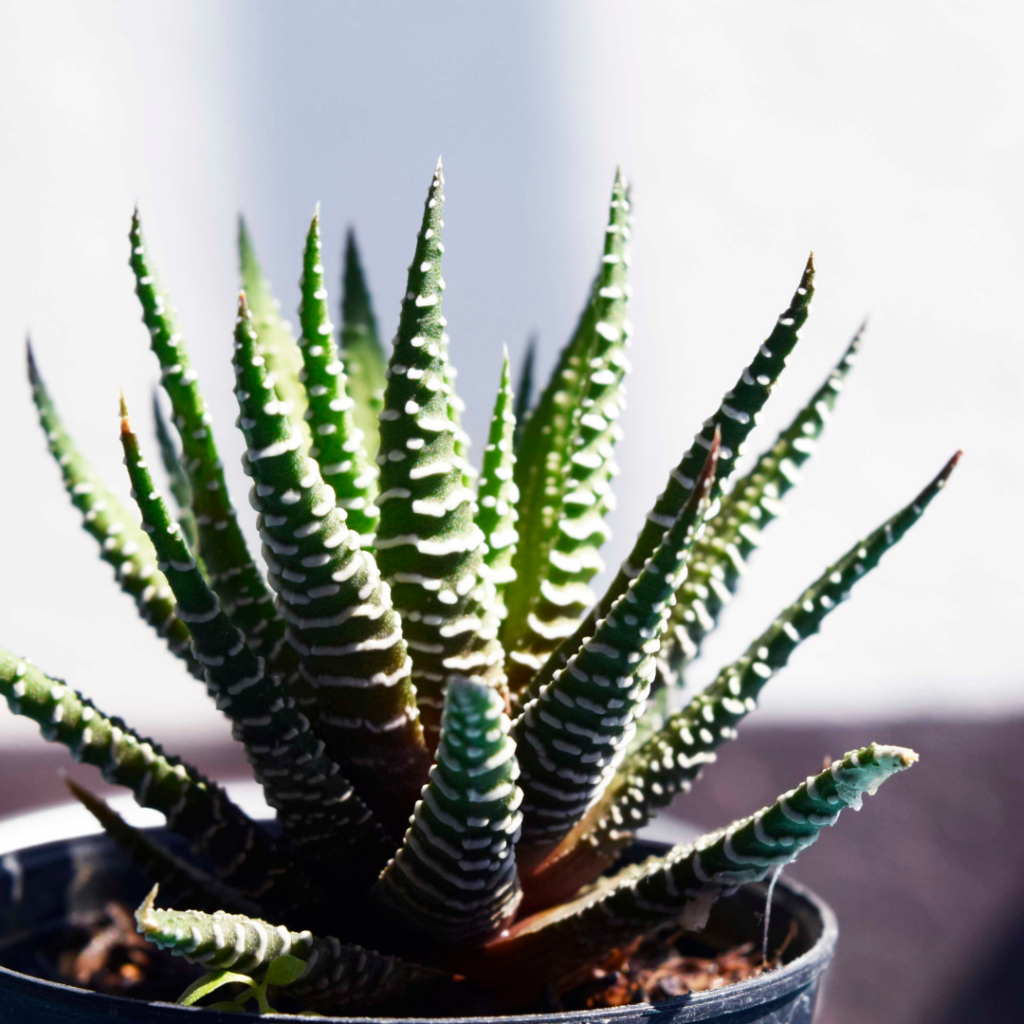
In addition to being a fantastic substitute for aloe vera, the haworthia plant requires far less maintenance since it is simple to satisfy its watering and lighting requirements.
Aloe and Haworthia plants both belong to the same family.
Haworthia foliage grows into a rosette and sprouts from the stem axis of the plant, much like Aloe Vera plants. White stripes that seem elevated on the surface adorn the leaves. Because of this, the plant is often referred to as the zebra plant.
7. Young Pineapple Plant
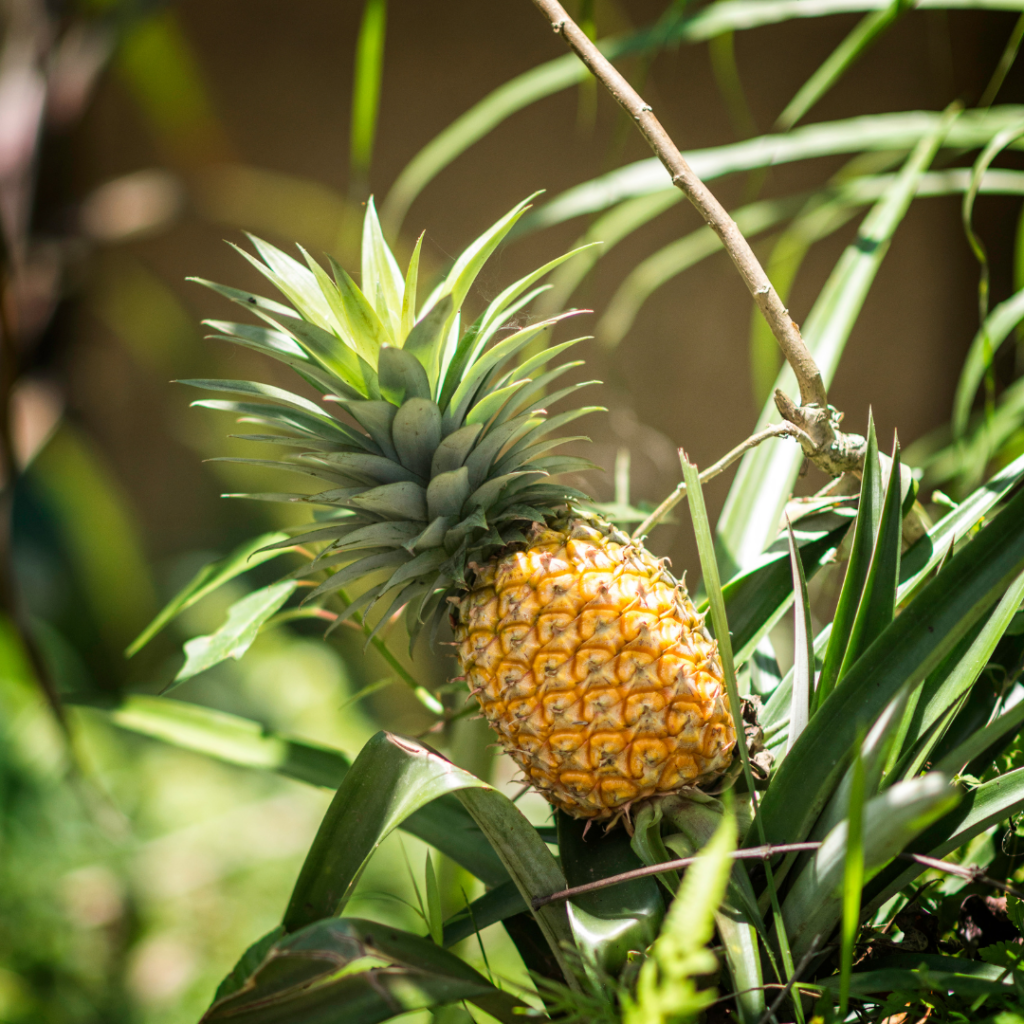
Young pineapple plants are readily mistaken for aloe vera plants before they yield the pineapple fruit.
Its foliage resembles that of Gasteria or Yucca leaves as well as that of an Aloe vera leaf. Like the other plants in this book, they have rosette-shaped leaves with spikes on the edges to protect the plant and its fruit.
The leaves of young pineapple are distinctly more rounded compared to the long, oval-shaped foliage of other succulent plants and have pointy ends as opposed to straight ones like the majority of other members of this family.
8. Sansevieria
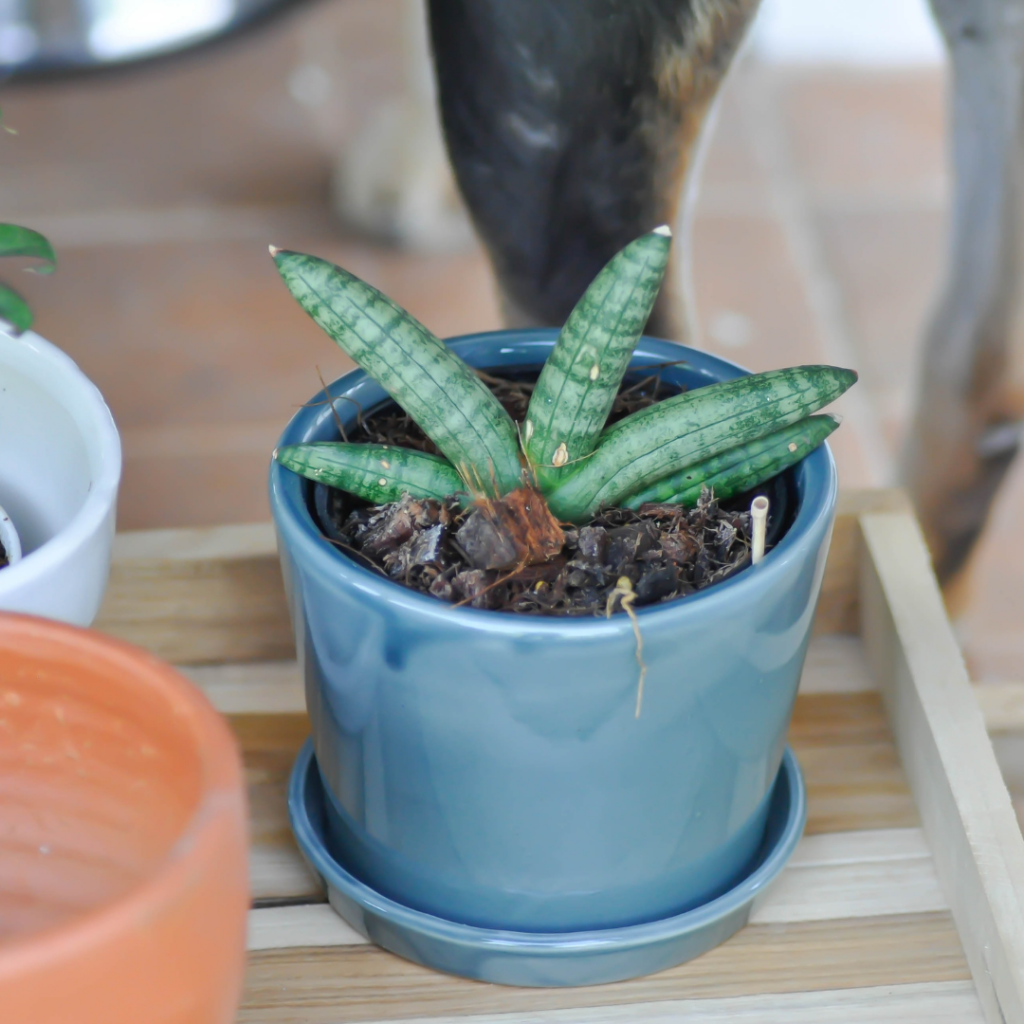
The snake plant is another name for Sansevieria. The plant, which is a member of the Asphodelaceae family, is native to Asia, Africa, and India.
The leaves of the mother-in-law\’s tongue are lance-shaped and dark green. When cultivated in a container or pot, the plant takes the shape of a rosette.
There are various types of snake plants, all of which have leaves with black borders and stripes. The leaves may grow up to four feet (20 inches).
9. Bergeranthus
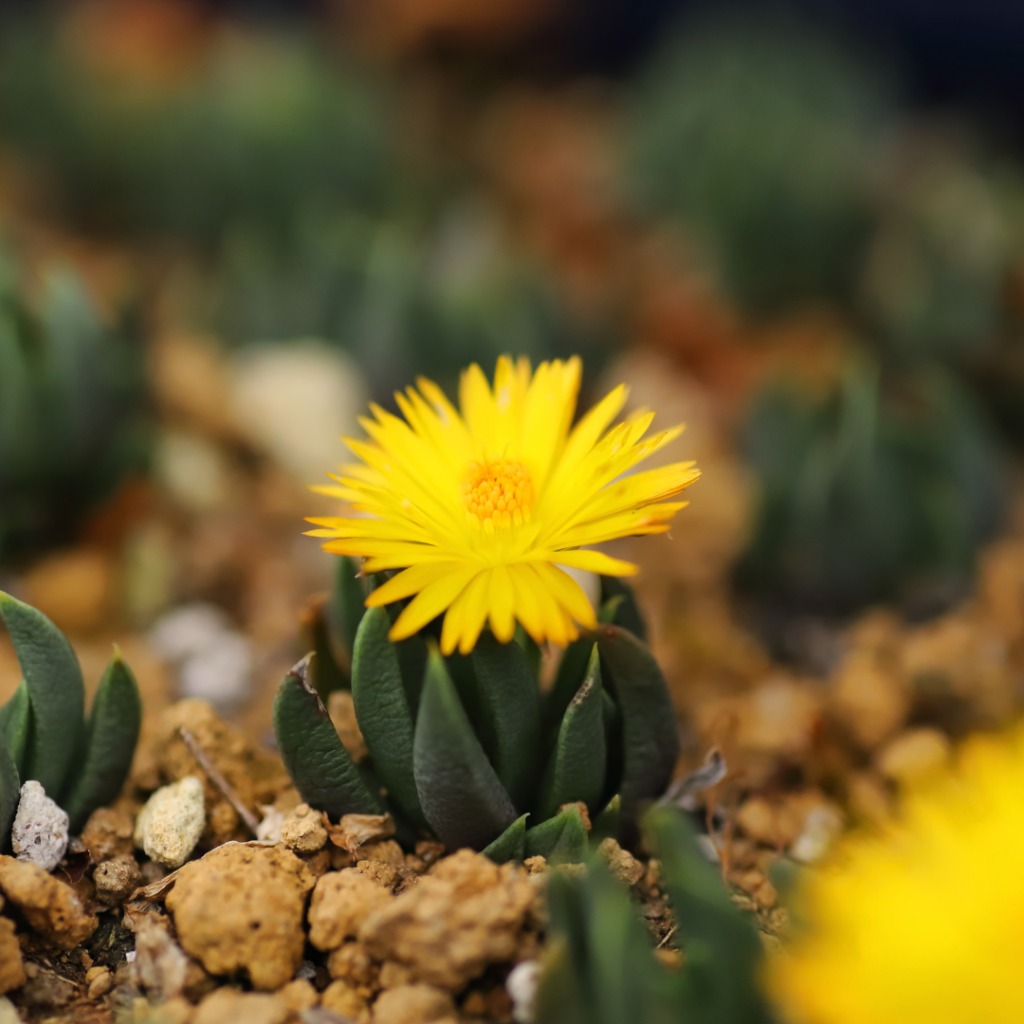
Bergeranthus is a South African plant that belongs to the Aizoaceae family. The succulent has fleshy, thick leaves that retain water, helping it to survive in semi-arid climates.
These drought-tolerant plants will make a magnificent statement on your house. The leaves have historically been used medicinally to treat burns and wounds.
Multiceps bergeranthus has 1-2 inch leaves that resemble a rosette. A lengthy trihedral prism with pointed ends is also seen in the leaves. The golden blooms of the bergeranthus species are solitary.
Deep green leaves with a broad base and tapering tips are seen on Bergeranthus scapiger. The leaves\’ edges are serrated, and they blossom an orange-yellow color.
10. Faucaria
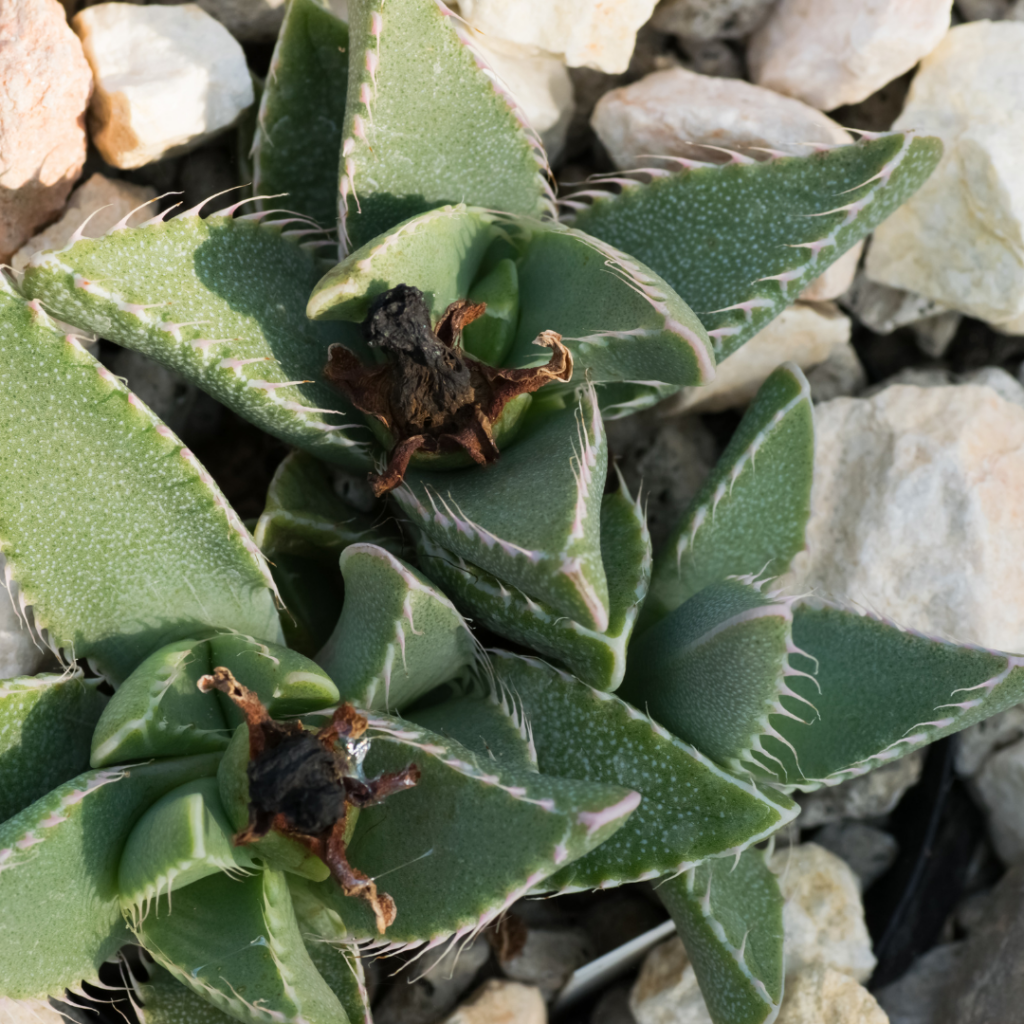
It is a Southern African shrub with succulent leaves. The bulk of the species is indigenous to Namibia and Cape Province. The most well-known faucaria species is the tiger’s jaw or cat\’s mouth.
The triangular, fleshy leaves of these succulents feature serrated edges. Faucaria feline is a decorative succulent that blooms in the winter with orange-yellow flowers.
The therapeutic characteristics of the succulent species may be used to treat dysentery, diarrhea, and stomach issues. The leaves may be used as an anti-inflammatory poultice for bites and wounds.
11. Stapelia
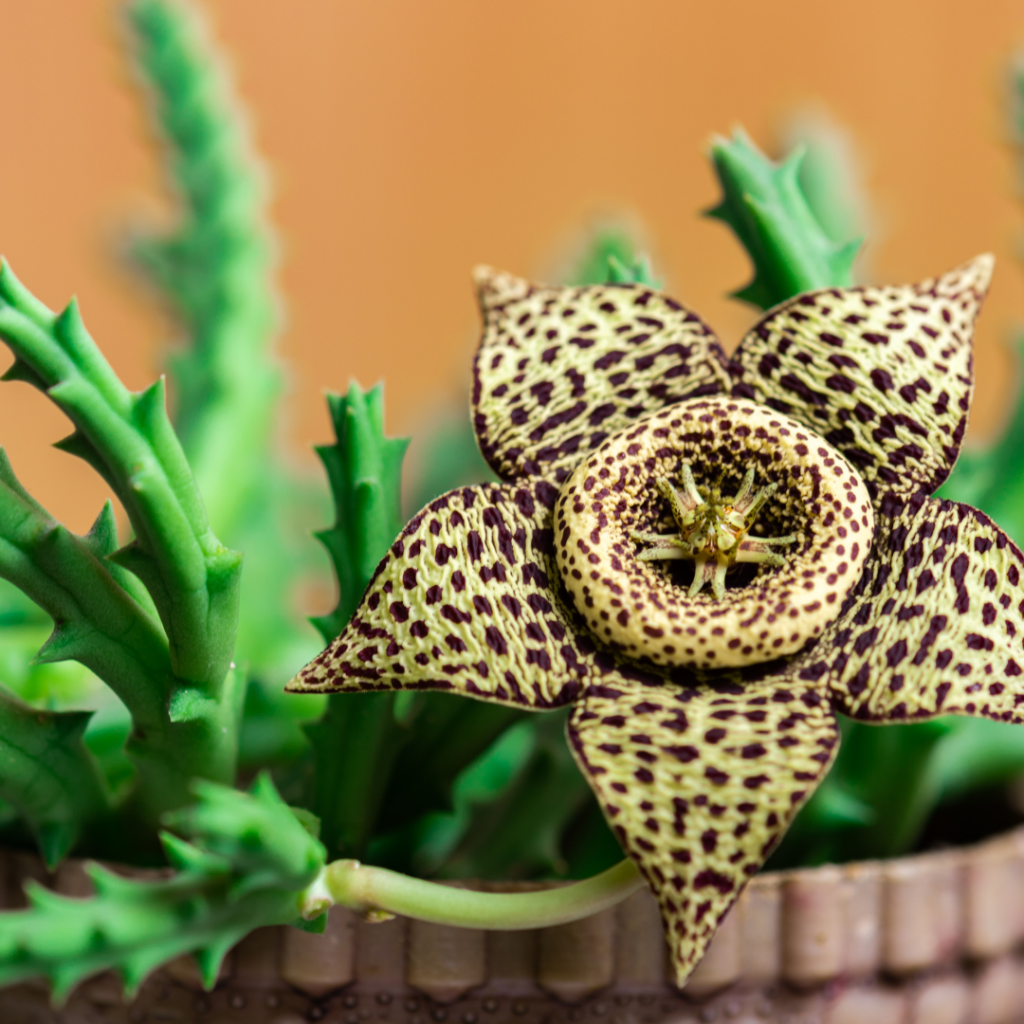
Southern Africa is home to the genus Stapelia, which includes cactus-like, low-growing plants without spines or leaves. Large and often meaty, the blossoms have a pungent, terrible aroma suggestive of decaying meat or carrion.
Stapelias are pollinated by flies drawn to the blooms by the odor, despite their look and odor. The genus bears Johannes Stapel\’s name, a Dutch botanist of the 17th century.
A range of uses for Stapelia species is found in traditional African medicine. The blossoms and stems are cooked to prepare a decoction that is used as a remedy for diarrhea, dysentery, and gastrointestinal ailments.
RELATED: Brown Trees: Everything You Need To Know About Them
12. Hechtia
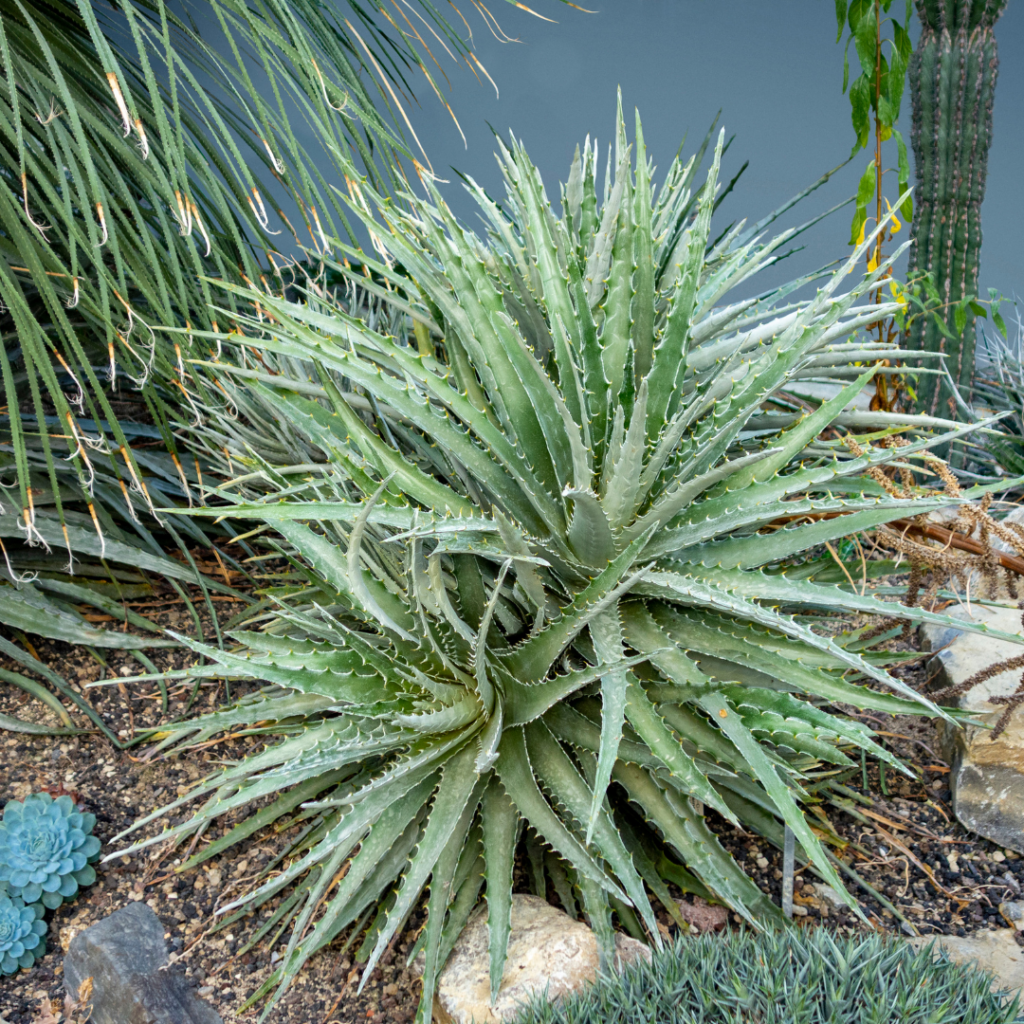
This succulent, which goes by the names \”octopus plant\” and \”Devil\’s Claw,\” is a native of Mexico. Long, thin leaves that are often either green or red make up this plant.
The Hechtia is renowned for its capacity to endure arid environments and even flourish on subpar soil. It is thus a fantastic option for anyone looking for a low-maintenance plant. Hechtia are not only attractive; they are also good for your health. The herb has been used for many years to cure a number of diseases in traditional medicine.
Hechtia may aid to strengthen the immune system, reduce inflammation, and even protect against cancer, according to modern scientific research. This plant is a terrific option if you\’re seeking for a plant that is both beautiful and beneficial to your health.
Toxic Plants That Are Similarly Looking to Aloe Vera
Many producers, particularly novices, mistakenly believe that aloe vera may be found on any aloe plant. Aloe vera is not found in all aloe plants, however.
This has created misunderstanding, and it might have negative effects. For instance, using the incorrect Aloe to treat a wound or to consume may both be lethal. Among the poisonous plants that resemble aloe vera are some of the following:
1. Aloe ballyi
This succulent tree may reach a height of 26 feet and is an evergreen. The solitary, unbranched stem of an aloe ballyi is approximately six inches in diameter and is crowned with a crown of leaves.
In Nairobi, Kenya, it is collected from the wild for decorative purposes and use in traditional medicine.
The sap of Aloe ballyi has a strong, unpleasant smell and is rich in anthraquinones, which have a variety of health advantages, including laxative properties.
In tiny doses over a short period of time, anthraquinones are not harmful. However, if taken too much, it may result in problems, including pelvic organ irritability and congestion. Additionally, anthraquinone laxatives have the potential to be tumorigenic and genotoxic, making long-term usage of them a risk factor for colon cancer.
2. Aloe africana
The name Aloe Africana refers to the plant\’s origin in Africa. Its linear-lanceolate, up to 25-inch-long leaves have a gray-green surface and are grouped in a rosette shape.
The margins of Aloe Africana feature tiny, crimson teeth. Its blossoms, which may be up to two inches long and are an appealing bright yellow to orange hue, appear on a branching, unbranched, or upright inflorescence. The 13-foot height of its straight stem is possible. The wind disperses the seeds of this plant.
3. Aloe polyphylla
The most enticing feature of this plant is its beautiful spiral, which is composed of five spiral rows of leaves arranged either counterclockwise or clockwise, giving the foliage an egg-shaped to elongated look while being green with a purple end and tapering to a point at their extremities.
4. Aloe aristata
Low-growing succulent plant Aloe aristata, often called Lace Aloe, is mostly found in South Africa. The leaves of this plant are fleshy, soft-spiky, dark green, and speckled with white. Its foliage changes color with the seasons, and the long stalks begin to bear orange-red blossoms.
5. Aloe ruspoliana
Aloe Ruspoliana is a stemless aloe with large clusters of yellow-green or green leaf. Although not farmed, this Aloe is commonly found in Kenya, Somalia, and Ethiopia. When damaged, the leaves also releases a rat- or mouse-like stench. It has flat, spherical, multi-branched inflorescences with yellow blossoms on them.
6. Aloe elata
A tall tree native to East Africa, aloe elata. When fully grown, it may grow to be unbranched and twenty feet tall. On elderly plants, the foliage is channelled and recurved, and when it is broken, it smells like mice or rats. Its inflorescences are multicolored, with red-budged flowers that open to yellow petals.
The rat-smelling leaf sap is poisonous because it contains alkaloids.
Which Aloe Vera Plant Variety Is Best for Skin
Aloe Vera is one of the herbal plants that is most often utilized for various skin treatments. This plant has a gel-like material that treats a variety of minor skin conditions, including sunburn, minor wounds, abrasions, and burns.
Having stated that, the following Aloe Vera plant varieties are beneficial to skin:
1. Cape Aloe or Aloe ferox
Tap Aloe, Aloe Ferox, Bitter Aloe, and Red Aloe are further names for Cape Aloe. Its harshness has made it well-known. Cape aloes are utilized in both cosmetic and medicinal.
They produce red blooms, and they may grow up to four feet longer than the foliage. Because it naturally nourishes skin, it is notably utilized in cosmetics.
2. Spider Aloe or Aloe humilis
The long, triangular, white-spotted leaves of the Spider Aloe, or scientifically named Aloe humilis, develop into a rosette. Yellow, red, and orange flowers are produced by spider aloes, which also have gorgeous red and orange blossoms. Sunburn may be effectively treated using their gel.
Final Thoughts
Aloe vera-like plants are plentiful, which makes them a great substitute for interior or outdoor décor. The Haworthia species is my favorite plant since it lacks spikes and resembles aloe vera.
If you like keeping succulents on your desk at work, stay away from deadly plants that resemble aloe vera. Aside from that, stay away from big plants resembling aloe vera since offices have few work spaces.
Editor’s Recommendations
Blue Myrtle Cactus How To Grow & Care (Myrtillocactus Geometrizans)
Find Out How to Choose the Right Succulent Pot (Easy Guide with Tips)
Succulents: Growing Indoors and Top 7 Shops To Buy Them Online







